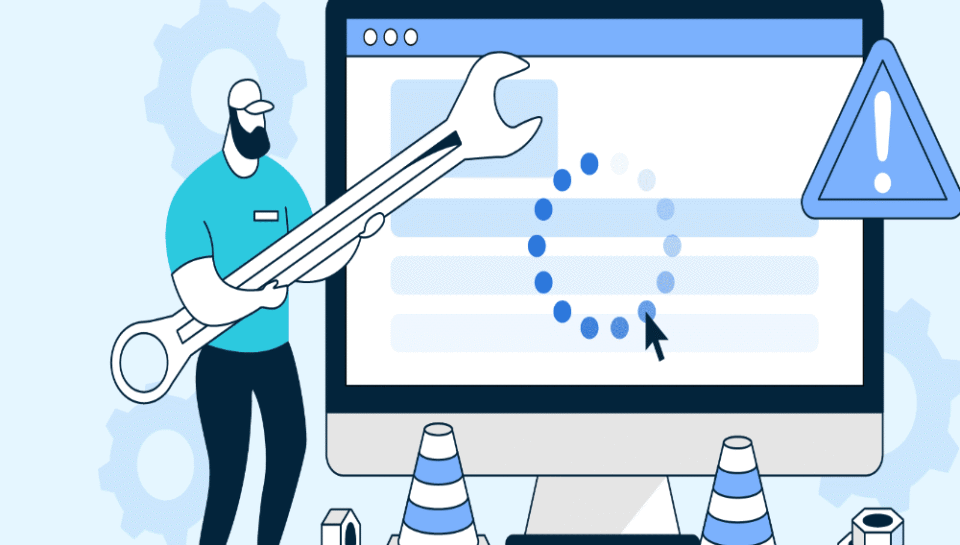
Define web maintenance in the context of modern websites
Introduction
In today’s fast-paced digital landscape, having a website is not a one-time event but an ongoing commitment. While building and launching a website are significant milestones, maintaining it is equally—if not more—crucial. Web maintenance refers to the continuous process of updating, managing, and optimizing a website to ensure it functions smoothly, remains secure, delivers the intended user experience, and stays aligned with evolving business goals. With constant technological advancements, shifting user expectations, and the rise of cyber threats, the context of web maintenance has dramatically changed. Modern web maintenance is a strategic activity that combines technology, content, user behavior analytics, and performance tuning to keep websites relevant and effective.
1. The Evolution of Web Maintenance
In the early days of the internet, web maintenance was primarily about checking for broken links and ensuring the server was up and running. Fast forward to the modern era, and maintenance has transformed into a multi-faceted operation involving SEO audits, UX/UI updates, integration management, performance analysis, and regular security checks. Websites today are dynamic platforms that interact with users in real-time, collect data, and offer complex services. Thus, maintaining them is a sophisticated process requiring dedicated attention and specialized skills.
2. Core Components of Modern Web Maintenance
Modern web maintenance consists of several core components:
- Content Updates: Regularly refreshing text, images, videos, and downloadable resources to keep the website relevant.
- Security Patches and Updates: Applying necessary security updates to prevent unauthorized access and data breaches.
- Performance Monitoring: Analyzing page load times, uptime, and responsiveness to deliver optimal performance.
- Backup and Recovery: Creating regular backups and having disaster recovery plans in place.
- SEO and Analytics Integration: Updating SEO strategies and monitoring performance via tools like Google Analytics.
3. The Role of Security in Maintenance
Cybersecurity has become one of the most significant aspects of web maintenance. Modern websites are common targets for hackers who exploit vulnerabilities to steal data, inject malicious scripts, or crash websites. Maintenance involves installing security patches, configuring firewalls, updating CMS plugins, performing vulnerability scans, and using SSL certificates. Regular audits help in identifying potential threats and mitigating them before they can cause damage.
4. Content Management and Relevance
Content is central to keeping users engaged. Web maintenance ensures that content remains accurate, up-to-date, and aligned with branding. It includes updating blog posts, product descriptions, company news, testimonials, and multimedia elements. Moreover, SEO-driven content revisions help maintain visibility in search engines and improve ranking, which is vital for traffic and conversions.
5. User Experience Optimization
User expectations are higher than ever. Web maintenance involves ongoing refinement of user interfaces (UI) and user experiences (UX) based on feedback, analytics, and usability testing. Improvements may include simplifying navigation, optimizing mobile responsiveness, fixing broken elements, and enhancing accessibility. A website that is easy to navigate and aesthetically pleasing directly contributes to user satisfaction and retention.
6. SEO Maintenance and Digital Visibility
Search engine optimization is not a one-off task. Algorithms change, competitors evolve, and user search patterns shift. Regular SEO maintenance includes keyword analysis, meta tag optimization, checking for broken links, improving page speed, updating sitemaps, and implementing schema markup. Maintaining a strong digital footprint requires consistency and attention to detail, which can only be achieved through ongoing web maintenance.
7. Compliance and Legal Updates
Modern websites must comply with various legal requirements such as GDPR, CCPA, or ADA (Americans with Disabilities Act). Maintenance activities include updating privacy policies, cookie consent mechanisms, terms of service, and ensuring content accessibility standards. Non-compliance can lead to penalties, lawsuits, or loss of customer trust, making this an essential part of any web maintenance strategy.
8. Integration with Third-Party Services
Websites often depend on third-party APIs and services like payment gateways, CRM systems, social media platforms, or marketing tools. Regular maintenance ensures these integrations are functional, updated, and aligned with the latest platform changes. Outdated integrations can result in service disruptions or data mismatches, which impact business operations and customer experience.
9. Data Analysis and Performance Tracking
Web maintenance includes tracking and analyzing data related to user behavior, site traffic, bounce rates, and conversion funnels. This data-driven approach helps identify performance bottlenecks and areas for improvement. Maintenance teams often use tools like Google Analytics, Hotjar, or SEMrush to gain actionable insights and implement targeted enhancements for better outcomes.
10. The Cost and ROI of Web Maintenance
While some view web maintenance as an ongoing expense, it’s better seen as an investment. A well-maintained website avoids costly downtimes, security breaches, and loss of customer trust. It contributes to lead generation, brand reputation, and customer satisfaction. The ROI of proactive maintenance far outweighs the risks and costs of reactive fixes or complete overhauls due to neglect.
Hashtags
#WebMaintenance #WebsiteSecurity #ModernWebsites #ContentManagement #UXOptimization #SEOMaintenance #DigitalVisibility #UserExperience #WebsiteBackup #PerformanceMonitoring #CyberSecurity #LegalCompliance #WebUpdates #APIIntegration #DataDrivenWeb #WebAnalytics #MobileOptimization #CMSUpdates #SiteReliability #WebDesignTrends #SEOUpdates #SSLProtection #OnlineReputation #TechMaintenance #ResponsiveWebDesign #SitePerformance





